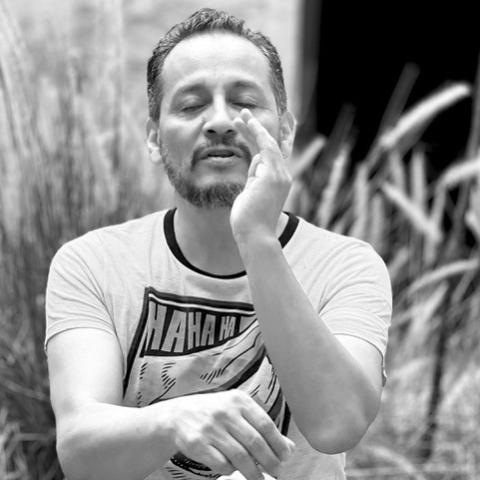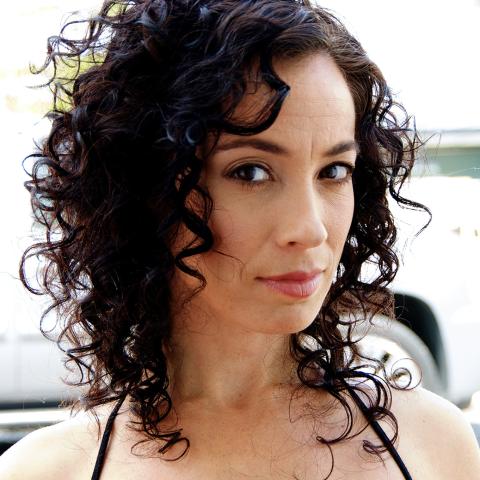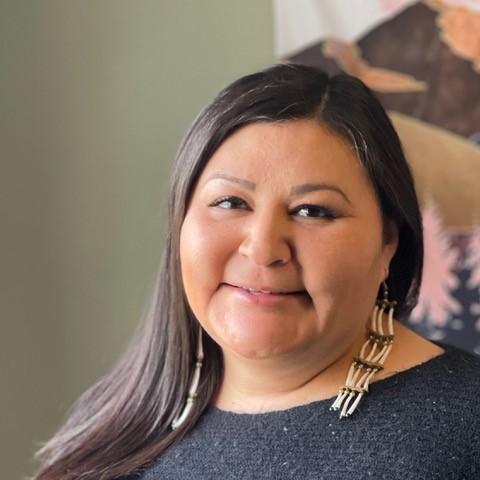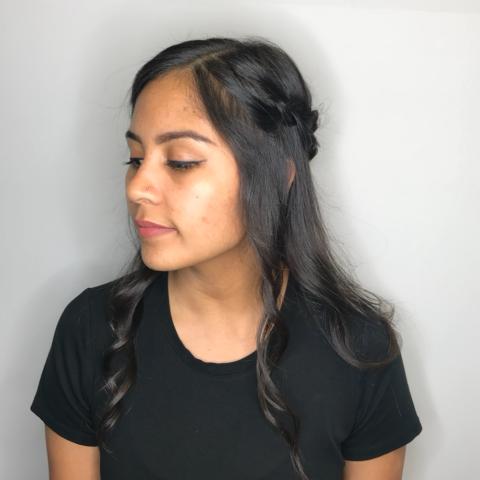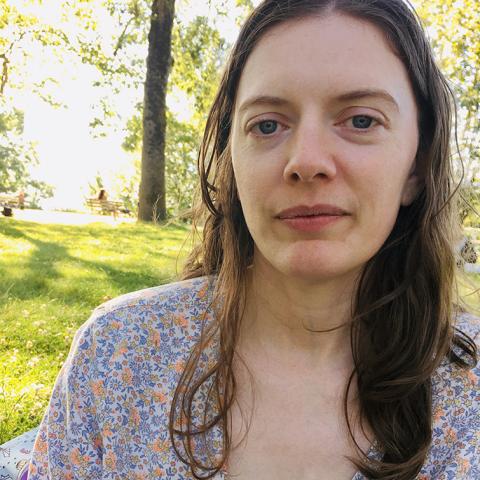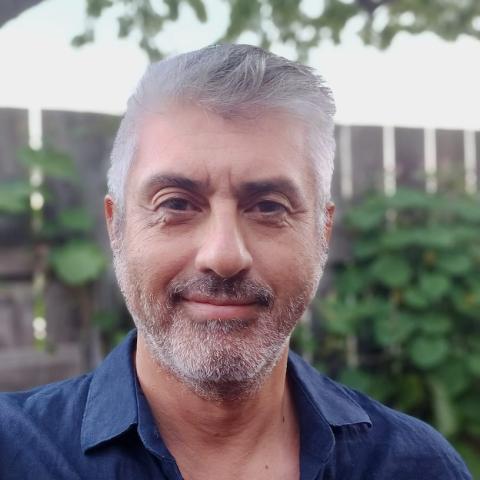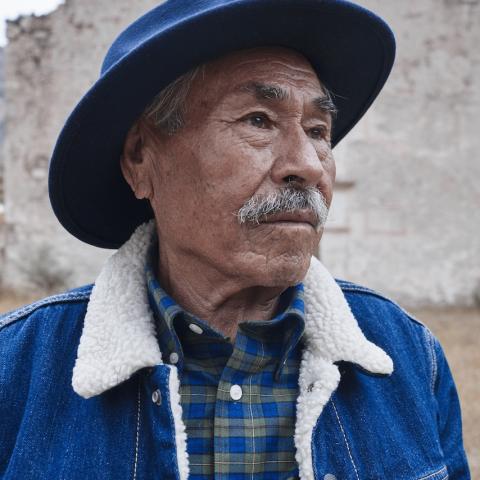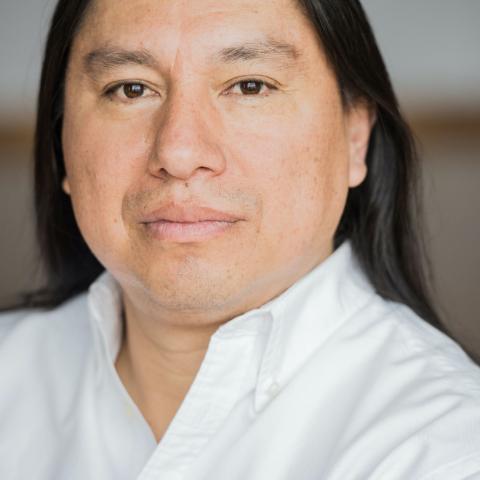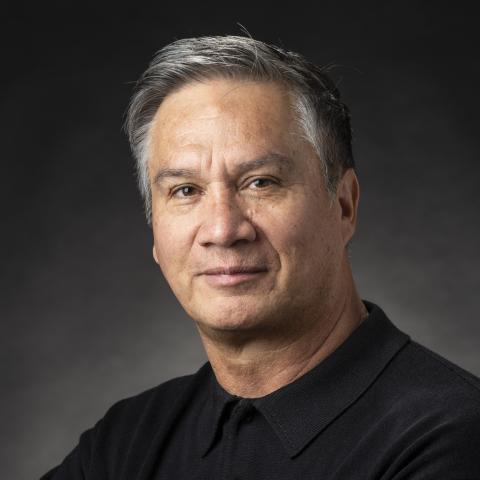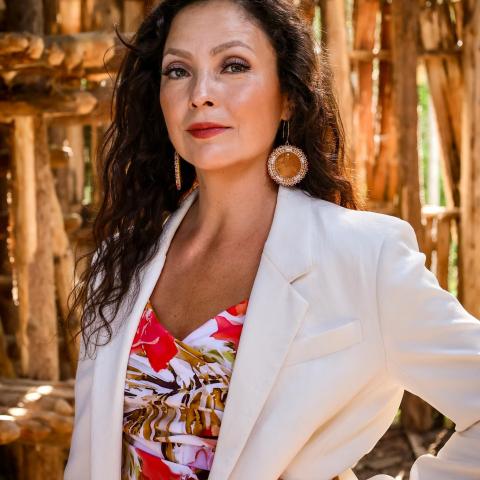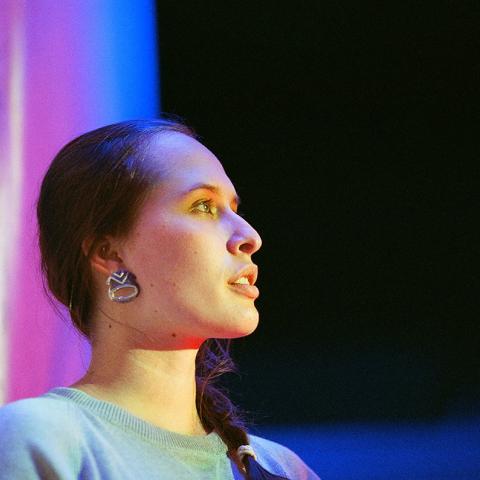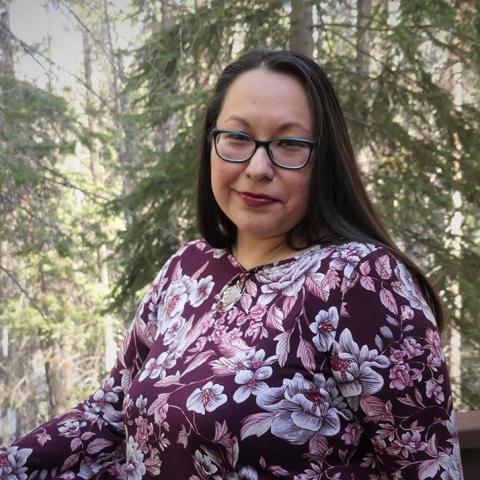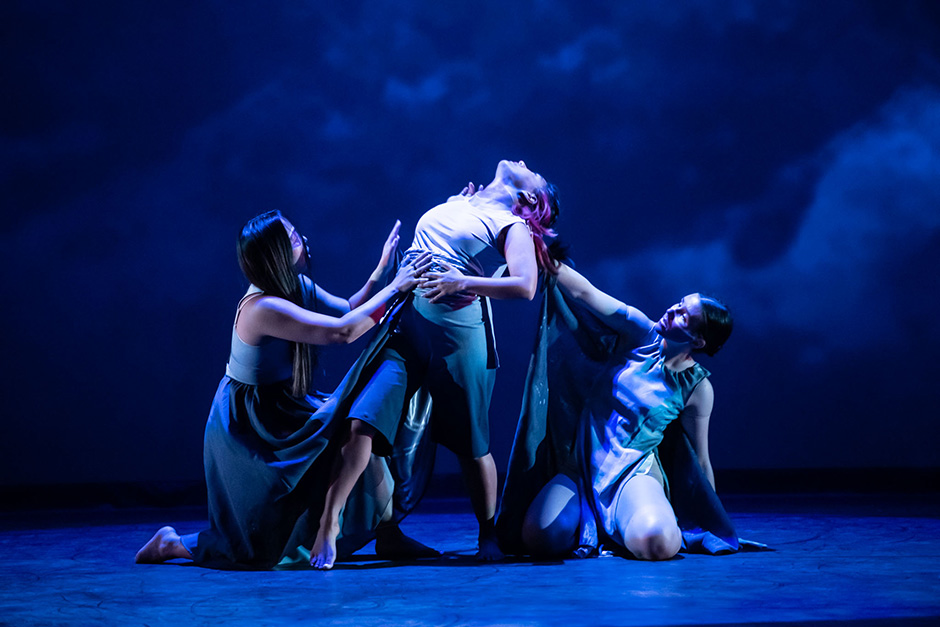
Kealy Atkinson, Kanako Uzawa, Gabriela Garcia Ortiz in Conditions to Strike, Intercultural Indigenous Dance Showcase, Banff Centre 2022. Choreographer: Montana Summers, Composers: Andrew Wenaus, Christina Marie Willat. Photo by Rita Taylor.
Artistic Credits
Ihtsipaitapiiyo'pa
Cedar Woman
ROSA
Faculty
Audience Advice Please be advised that this performance contains partial nudity. We encourage parents and guardians to use their discretion when attending with minors. We would like to remind you that recording and photography are strictly prohibited. Please ensure your cell phones are silenced to avoid disruptions.
Message from Artistic Director
Message from Banff Centre Director of Indigenous Arts – Janine Windolph
Indigenous Arts is honored to host the Indigenous World Dance Residency Showcase which features the work of Indigenous choreographers and dancers from around the world. The roots of this programs began in the Intercultural Indigenous Choreographers Lab, and through the vision of Alejandro Ronceria, it has a deep history in the Banff Centre to bringing Indigenous choreographers and dancers to Sacred Buffalo Guardian Mountain. This year we are honored that Santee Smith has joined Alejandro to co-lead this re-designed residency. Indigenous Arts is committed to creating space to explore, to experiment and to have an opportunity to share works in progress with the Bow Valley community. We welcome you to celebrate the vision and works-in-progress from these talented choreographers and dancers.
Message from Banff Centre Artistic Director of Dance – Alejandro Ronceria
Welcome to the esteemed Indigenous World Dance Residency, a platform of great significance in the world of dance. We acknowledge our home on the side of Sacred Buffalo Guardian Mountain with deep respect and gratitude. In the spirit of respect and truth, we honour and acknowledge the Banff area, known as "Minhrpa" (translated in Stoney Nakoda as "the waterfalls") and the Treaty 7 territory and oral practices of the Îyârhe Nakoda (Stoney Nakoda) – comprised of the Bearspaw, Chiniki, and Goodstoney First Nations – as well as the Tsuut'ina First Nation and the Blackfoot Confederacy comprised of the Siksika, Piikani, Kainai. We acknowledge that this territory is home to the Shuswap Nations, Ktunaxa Nations, and Métis Nation of Alberta, Rockyview District 4. We acknowledge all Nations who live, work, and play here, help us steward this land, and honour and celebrate this place.
It has been three beautiful weeks of great exchange of ideas, knowledge, and hard work in and out of the dance studios. Tonight, we share original work developed during the residency, choreographers, and dancers at the Banff Centre, exploring re-embodiment and Indigenous voices. I want to thank our faculty’s great work, guidance, and generosity.
We are grateful to Chris Lorway and Janine Windolph’s leadership and the tremendous support from the Banff Center staff; we thank all the people who nurture our bodies and souls to make this possible.
Message from Co-Lead Faculty, Dramaturgy - Santee Smith
Shé:kon-sewakwékon / Greetings Everyone and Wa'tkwanonhwerá:ton / Welcome.
As a guest faculty at the World Indigenous Dance Residency, my role is to guide, nurture, and provoke the residency artists, guiding them to dive into a transformative ocean of potentiality with the goal of propelling their creative work into enriched and new territories. Working alongside Director Alejandro Ronceria with our combined years of experience in dance, embodied storytelling, creation/production knowledge and Indigenous performance studies, we joined forces as instigators and sounding boards. Centering Indigenous methodologies and recognizing our connection to the land here at Treaty 7 and our homes, this residency is not just about creating dance; it's about fostering a profound connection between the artists, their stories, and the land. Returning to Banff Centre for Arts & Creativity to collaborate with the Indigenous Arts and Theatre Arts teams, the invited choreographers and their teams has been an essential learning experience for all.
Nia:wen / thank you, I’m grateful to be a part of this process.
@kahawidance @santeesmith
Synopsis
Indigenous World Dance Residency Showcase presents three performances by international Indigenous choreographers and dancers that bring their stories and experiences to the stage.
IHTSIPAITAPIIYO'PA
A performance conceived, created, and directed by Eva Macias.
“...the Ihtsipaitapiiyo'pa is the great mystery that is in everything in the universe. Ihtsipaitapiiyo'pa lives in each and every form of creation, as all life forms contribute and participate in giving life.” -Betty Bastien, Blackfoot Ways of Knowing: The Worldview of the Siksikaitsitapi (2004)
This dance work explores balance within the powers of Ihtsipaitapiiyo'pa [source of life], and the interconnectedness of human and more than human forms of creation. Ihtsipaitapiiyo'pa references Amskapi Pikuni & Siksikaitsitapi world views from knowledge shared by elders and relatives. This dance is a work in process that engages with concepts of creation, expansion of form, and transformation.
CEDAR WOMAN
A performance conceived, created, and directed by Tasha Faye Evans.
At the core of me, is you. The first seed that planted and grew and grew and grew. I am your prayers .I am all of your dreams wrapped into me. I am your every fall and rise and fall and rise again and again. When I fight and lose and fight and lose it is your voice that sings and then mine and my daughter’s after me.
We are a legacy. Coast Salish women. Cedar Women.
Cedar Woman is a prayer amongst a long line of prayers. It is a tribute to a legacy of Coast Salish women spanning all the way back to a tree. Cedar Woman is a new contemporary dance about protecting what we know from the depth of our soul to be sacred. This is an excerpt of a work in process.
ROSA
A dance-theatre piece conceived, created, and directed by Carlos Rivera Martinez.
About the project:
What are the circumstances that lead to the denial and transformation of the personal and cultural identity of people of indigenous origin for them to be accepted in a society and in a country that does not recognize the cultural diversity of its population? How is indigeneity transformed, neglected, and practically erased from a body?
ROSA is a performative-dance-based work about the life journey of an indigenous and peasant woman who faced abuse and violence from her partner and her in-laws and decided to emigrate from her community located in the highlands of Puebla State to Mexico City. Leaving her community of Ixtacamaxtitlan with her six children, she crossed valleys, climbed mountains, and faced enormous challenges during the trip that took her weeks to accomplish. Then, on her arrival in Mexico City, she experiences brutal discrimination from almost everyone that she encounters. She faced difficult and painful decisions that would transform her life and the lives of her descendants for generations to come.
This piece will be based on facts of the life story of my grandmother, Rosa Islas Lopez. Still, instead of relating the facts in the style of a documentary performance piece, I aim to seek to use them as detonators to create a movement-poetic and visual narrative that exposes the experiences and the struggles lived by people who decide to make the difficult decision to emigrate to another place, country, or culture, and the cultural dispossession confronted throughout these immigration process; and who those leave huge visible and invisible marks on the people who experience displacement from the land, culture, and family.
The movement vocabulary for the work has been developed during two previous research residencies under the laboratory format, the first one as part of the Banff Indigenous Dramaturgies Program, which took place in May 2023, and the second at the end of July 2023 in Ixtacamaxtitlan, Puebla, Mexico.
During these residencies, I explored ideas, images, and storytelling that function as detonators for devising, creating, and exploring gestures and movements, experimenting through improvisation sessions after long contemplations and land engagement exercises. Explorations were captured on video, photographs, and written notes for further analysis and became the project's primary source.
ROSA is a project combining an essential process of linking binational alliances that not only enrich the artistic process of the work but also forge a path of opportunities and responsibilities for all members involved in the project. Among those who make up the work team, we can highlight Les Productions Ondinnok, a well-known Indigenous Theatre organization based in Montreal, joining the project as a coproducer of the project. RUTAS Festival and Aluna Theatre have invited the project to participate in the programming for the 2024 festival edition. CENART National Arts Center in Mexico City as a presenter of the piece in Mexico City in 2025. Abra Projects, a Mexican performing arts management and production office, will oversee all business related to producing, presenting, and touring the work in Mexico.
